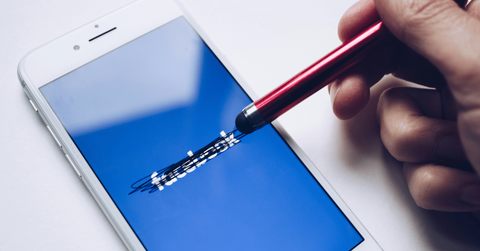Cancel Culture and Social Media: Where Do We Draw the Line?

Nov. 21 2024, Published 3:00 a.m. ET
In the digital age, social media has become a powerful tool for amplifying voices, sharing stories, and fostering accountability. However, it has also given rise to cancel culture—a phenomenon where individuals, brands, or even ideas face swift and public backlash. While accountability is crucial, the fine line between holding someone responsible and silencing them is often blurred. So, where do we draw the line?
The Rise of Cancel Culture
Cancel culture is not new, but the speed and scale of social media have magnified its impact. With just a few clicks, a hashtag can trend, calling for boycotts or condemning someone for their actions or statements. This phenomenon often starts with good intentions—highlighting injustices, addressing harmful behavior, or demanding change. But as with any powerful tool, misuse and overreach can occur.
On one hand, cancel culture has brought justice to light, especially in cases where traditional systems failed to hold individuals accountable. Movements like #MeToo empowered survivors to speak out, forcing society to confront uncomfortable truths. On the other hand, the same culture can spiral into mob mentality, where people are “canceled” without context or an opportunity to explain.
Balancing Free Speech and Accountability
The tension between free speech and accountability lies at the heart of the cancel culture debate. Advocates argue that the right to express oneself should not come at the expense of others’ dignity or safety. Critics, however, warn that cancel culture stifles free speech, creating an environment of fear where people hesitate to share differing opinions.
It’s a tricky balance. For instance, when controversial figures are called out, it prompts an important conversation about the consequences of their actions. But at what point does this accountability shift into suppression? When legitimate criticism is drowned out by personal attacks or threats, the line between justice and harassment becomes indistinguishable.
Social Media: A Double-Edged Sword
Social media platforms are often the battlegrounds for cancel culture. They enable communities to organize and hold individuals accountable, but they also fuel impulsive reactions. In an era of virality, the court of public opinion often acts faster than due process.
Consider the crypto casino industry—a sector increasingly tied to debates about accountability. New sites like Razed face scrutiny not only for ethical concerns but also for their role in shaping online economies. Just as social media users expect transparency from influencers and celebrities, ‘tabooed’ industries must navigate the tightrope of public opinion and regulatory expectations. These dynamic mirrors cancel culture’s broader themes: Who decides what’s acceptable, and what happens when the masses disagree?
The Role of Intent and Context
One major flaw in cancel culture is its lack of nuance. Human beings are complex, and mistakes are inevitable. Yet, the internet often treats offenses as black and white, ignoring context or intent. Did someone’s comment stem from ignorance, malice, or a lapse in judgment? Should there be room for growth and learning?
Accountability should not equate to permanent exile. If someone shows genuine remorse and takes actionable steps to improve, shouldn’t they be given a chance to rebuild their reputation? A culture that allows no room for redemption risks alienating people and stifling meaningful progress.
Constructive Accountability: A Path Forward
So, how do we move forward? Cancel culture, when approached constructively, can serve as a powerful tool for social change. Instead of rushing to cancel someone, what if we encouraged open dialogue? Education and constructive criticism could foster understanding and long-term improvements.
Additionally, social media platforms bear responsibility for fostering healthier online environments. Improved moderation, clear community guidelines, and tools to prevent harassment can curb the darker aspects of cancel culture without undermining accountability. Users, too, must pause and reflect before jumping on the latest digital outrage.

Conclusion: Drawing the Line
Cancel culture reflects society’s desire for justice and accountability, but it also highlights the pitfalls of online discourse. The line between constructive criticism and harmful silencing is thin, yet essential to navigate. By embracing intent, context, and dialogue, we can create a culture that upholds accountability without sacrificing humanity. Social media—and other industries must learn to walk this line, ensuring fairness and transparency in an increasingly connected world.
The question remains: How do you want to contribute to the conversation?
The information provided in this article is for general informational purposes only. Gamble or play responsibly. If you or someone you know has a gambling problem, help is available. Call 1-800-GAMBLER. If you’re in the U.K. and need help with a gambling problem, call the National Gambling Helpline on 0808 8020 133 or go to gamstop.co.uk to be excluded from all UK-regulated gambling websites. We disclaim any liability for any loss or damage arising directly or indirectly from the use of, or reliance on, the information presented.


